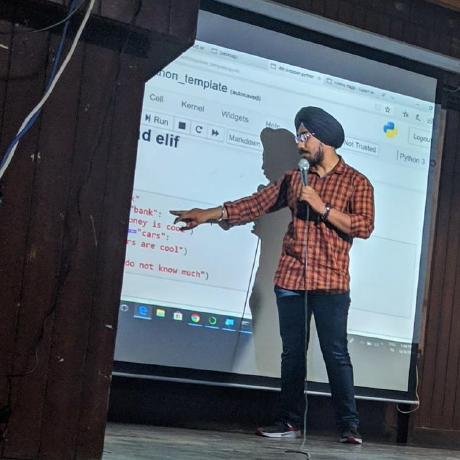
MCP Database Server
mcp server for all types of database that connects with LLMs
what is MCP Database Server?
MCP Database Server is a Model Context Protocol (MCP) server that enables Large Language Models (LLMs) to interact with various databases using natural language queries. Currently, it supports MongoDB and plans to extend support to other databases like PostgreSQL, CockroachDB, and Redis.
how to use MCP Database Server?
To use the MCP Database Server, clone the repository from GitHub, install the necessary dependencies, and configure your database connection in the Claude Desktop configuration file. You can then interact with your database using natural language commands.
key features of MCP Database Server?
- Natural language database operations
- Support for MongoDB with features like listing collections, querying, inserting, deleting, and aggregating data
- Future support for PostgreSQL, CockroachDB, and Redis
use cases of MCP Database Server?
- Querying a MongoDB database using simple English commands.
- Inserting and deleting records without writing complex queries.
- Aggregating data from collections to generate insights.
FAQ from MCP Database Server?
- What databases does MCP Database Server support?
Currently, it supports MongoDB, with plans to add PostgreSQL, CockroachDB, and Redis in the future.
- Is there a specific version of Node.js required?
Yes, Node.js version 20.12.2 or higher is required to run the server.
- Can I contribute to the MCP Database Server?
Yes! Contributions are welcome, and you can submit a Pull Request or open an issue to discuss changes.
MCP Database Server
A Model Context Protocol (MCP) server implementation that allows Large Language Models (LLMs) to interact with various databases through natural language. Currently supports MongoDB, with plans to support:
- PostgreSQL
- CockroachDB
- Redis
- And more...
Features
- Database operations through natural language
- Currently supports MongoDB with features:
- List all collections
- Query documents with filtering and projection
- Insert documents
- Delete documents
- Aggregate pipeline operations
- Future support for other databases:
- PostgreSQL: SQL queries, table operations
- CockroachDB: Distributed SQL operations
- Redis: Key-value operations, caching
Prerequisites
- Node.js v20.12.2 or higher
- Database (currently MongoDB, other databases coming soon)
- Claude Desktop Application
Installation
- Clone the repository:
git clone https://github.com/manpreet2000/mcp-database-server.git
cd mcp-database-server
- Install dependencies:
npm install
- Build the TypeScript code:
npm run build
Configuration
To get started, you need to configure your database connection in your Claude Desktop configuration file:
MacOS
~/Library/Application\ Support/Claude/claude_desktop_config.json
Windows
%APPDATA%/Claude/claude_desktop_config.json
Add the following configuration to your claude_desktop_config.json:
{
"mcpServers": {
"database": {
"command": "/path/to/node",
"args": ["/path/to/mcp-database/dist/index.js"],
"env": {
"MONGODB_URI": "your-mongodb-connection-string"
}
}
}
}
Replace:
/path/to/nodewith your Node.js executable path or just usenode/path/to/mcp-databasewith the absolute path to this repositoryyour-mongodb-connection-stringwith your MongoDB connection URL
Usage Examples
MongoDB Examples
- List all collections in your database:
Can you show me all the collections in my database?
- Get specific records from a collection:
Give me 2 records from the chargers collection
- Query with filters:
Show me all documents in the users collection where status is active
- Insert a document:
Add a new user to the users collection with name John and email john@example.com
- Delete a document:
Remove the user with email john@example.com from the users collection
- Aggregate data:
Show me the total count of users by status in the users collection
Available Tools
1. getCollections
Lists all collections in the connected database.
2. getCollection
Retrieves documents from a collection with optional query parameters:
collectionName: Name of the collectionlimit: Maximum number of documents to return (default: 10, max: 1000)query: MongoDB query objectprojection: Fields to include/exclude
3. insertOne
Inserts a single document into a collection:
collectionName: Name of the collectiondocument: Document object to insert
4. deleteOne
Deletes a single document from a collection:
collectionName: Name of the collectionquery: Query to match the document to delete
5. aggregate
Executes an aggregation pipeline:
collectionName: Name of the collectionpipeline: Array of aggregation stagesoptions: Optional aggregation options
Future Database Support
PostgreSQL
- SQL query execution
- Table operations
- Schema management
- Transaction support
CockroachDB
- Distributed SQL operations
- Multi-region support
- Transaction management
- Schema operations
Redis
- Key-value operations
- Caching mechanisms
- Pub/sub operations
- Data structure operations
Security
- Never commit your database connection strings to version control
- Use environment variables for sensitive information
- Follow database-specific security best practices
Contributing
Contributions are welcome! Please feel free to submit a Pull Request. For major changes, please open an issue first to discuss what you would like to change.
License
MIT License - See LICENSE for details






